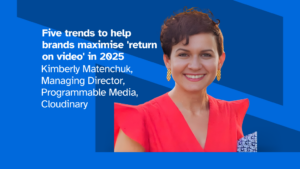By Joe Dolan, Commercial Director, Microsoft Advertising
For advertisers, Christmas represents an important test to see if they can really cut through the festive noise and get their brand noticed. Even more pressing, as football’s ultimate competition kicks off simultaneously.
This year, five billion people globally are expected to tune in to the competition – a 42% rise on the 2018 viewing figures. Yet most of the upcoming matches are set to kick off during the UK workday, and many clash with prime holiday shopping moments, with England vs USA scheduled for 7pm UK time on Black Friday itself this week. While the tournament is expected to have a $2bn positive impact on ad spend, its concurrence in the lead-up to Christmas means it will create more competition for media, higher costs and the need for bigger and more diligent planning by ad planners.
As the cost of living crisis continues to grapple people’s wallets, advertisers must also be mindful about the messaging of their Christmas ads, making sure they hit the tone just right in line with how consumers are feeling and thinking as rising inflation impacts consumer behaviour.
It might seem like there’s a looming threat in the midst of a football frenzy, but there is a real opportunity to still leverage the tournament’s advertising potential to boost brand awareness, tapping into the drama and heightened excitement that the sport itself presents.
The challenge for advertisers
Media spend around the tournament will need to be carefully planned to deliver commercial return on investment (ROI). As consumers tighten their belts and go out less, there’s a potential negative impact on the hospitality industry. Consumers may opt for cheaper alternatives and purchase snacks to watch the tournament at home in order to save money. Brands should be mindful in terms of any advertising and products they might like to hero.
Brands and advertisers will need to ensure they have the right strategies in place so they are able to reach consumers while they are at home. Food and drink are essential to celebrations and Fast Moving Consumer Goods (FMCG) sales are predicted to do well as a result, which presents an opportunity for advertisers to hone in on driving careful preparations in order to meet this rising ‘stay at home’ consumer demand.
Cutting through a saturated media marketplace
Economic uncertainty means many advertisers will turn to the reliability of search and other performance campaigns, but that may not be enough during a shopping season that’s competing for attention with the biggest sporting event in the world. Tools such as high impact image and video ads, which carry strong search intent are key to moving customers quickly down the sales funnel. Combining multimedia ads with search and native advertising for example works well to optimise budgets, drive consumer conversations and ultimately increase ROI.
Research showed that delivering more ads to highly targeted audiences leads to an increased ROI of $2.60 per $1 spent. As the tournament will be watched by two-thirds of the world’s population at some point, these fans will be highly engaged, and well-targeted towards buying brands that reach them with the right content.
In addition, recent data from the Advertising Association showed that traditional TV advertising spend is expected to remain fairly flat during the quarter, as it reckons the biggest winners will be on-demand-video and connected TV services. As such, advertisers that utilise these services, alongside a mix of other channels, will benefit from increased visibility and maximise their chances to reach their target audience.
Football or festive? Getting the balance right to win over fans
As many tune into matches during the workday, businesses should expect an increase in PC usage time. Many people are expected to keep their emails and spreadsheets on one screen, while following a match in the background on another, or they may even use the time to multitask and do online Christmas shopping.
It’s clear that this change in consumer behaviour will play out predominantly in the months and even years ahead. As such, there is an opportunity here for advertisers to tie into cultural moments like Christmas and football’s biggest tournament to further meet consumers where they are at.
For advertisers, this has meant they have had to find ways to keep up with this change in consumer behaviour and ensure their business evolves in line. This has been seen both in strategies to retain and attract staff, as well as reach consumers with their newly forged behaviours and buying cycles. The change in consumer behaviour has presented a real opportunity here for advertisers to capitalise their advertising efforts by not pausing their campaigns during peak times but instead drive traffic towards them. However, engaging consumers whilst their interests lie on festivities, working and watching the tournament, will be a tricky balancing act which advertisers must tread correctly and carefully.
The appeal of the tournament goes well beyond core football fans. The modern football fan is happy to jump from device to device to find information about the latest football fixtures to simply watching a live match. But especially amongst the younger audience, getting their sporting fix online, the campaigns that combine the more affordable connected TV advertising, multimedia ads and native search will generate the best results.
While the tournament presents a unique opportunity for many brands and advertisers, its conflict with the festive period – combined with a highly saturated advertising market – highlights the need for advertisers to think differently, utilise new channels and spend carefully to break through the noise, hit their KPI’s and ensure it’s coming home this festive season.









